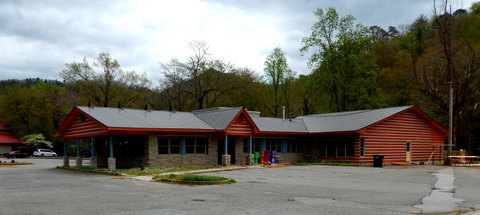
Cherokee Reservation is site of showpiece
The heritage, art, science, craft and sport of fly fishing will be featured in a museum dedicated solely to fly fishing on the Cherokee Indian Reservation.
After more than a year of planning, the Cherokee Tribal Council has approved a preliminary budget and site for the museum, which will be called the Fly Fishing Museum of the Southern Appalachians. Plans are to have the first phase of the project completed in spring of 2015.
The museum’s site is an abandoned 5,000-square-foot restaurant in downtown Cherokee adjacent to the Oconaluftee River and fittingly in the same vicinity as the Museum of the Cherokee Indians and the Cherokee Historical Society. Although the museum will be on the Cherokee Indian Reservation and will feature fishing practices and artifacts of early Cherokee, the project is a multi-state operation that will include the rich heritage of fly fishing from throughout the southern Appalachian mountains and the Southeast.
Although several museums dedicated to fly fishing are in western and northeastern states, the Cherokee museum will be the only one of its kind in the Southeast. The project has support from a number of fly-fishing organizations, including The Southeastern Council of the International Federation of Fly Fishers.
Forrest Parker, a chamber board member and deputy operations officer for the tribe, is helping spearhead the project. The goal of the museum, he said, is to show fly-fishers and non-fishers alike what a huge part fly-fishing has played in the culture of the Cherokee and the people of the southern Appalachians and how valuable it’s been to so many people of the region.
“We want people to visit the museum and leave feeling like they have a better understanding of fly-fishing in the southern Appalachians,” he said.
Although the Cherokee Chamber of Commerce had been looking for new ways to increase tourism to the reservation, the idea for the museum came from outside the reservation. Parker said fly-fishing enthusiasts from the area presented the idea of the museum to the chamber.
“It started with an e-mail and a phone conversation,” he said, “and within a couple of months, we had almost 1,000 supporters.”
Pledges of support, he said, have come from all the surrounding states as well as individuals, businesses and corporations. Parkers hopes that people from throughout the area will take part in establishing the museum by donating not only money but stories, songs, photographs, information and artifacts such as rods, reels, flies and related gear from various periods.
Initially, Parker said, the museum will include exhibits, educational programs, information about fly fishing, and, probably, a gift shop. “We hope the museum will be self-supporting,” he said.
Eventually, Parker said, the museum will be expanded to include a large aquarium featuring native fish of the area, including brook trout and redhorse and non-native species such as the rainbow and brown trout, which have been established in the southern Appalachians since the 1800s.
Surrounded by trout streams in the Great Smoky Mountains National Park and the Nantahala National Forest, plus streams managed by the N.C. Wildlife Resources Commission, the Eastern Band of the Cherokee Indians has had its own fishing program since the mid-1950s. The Enterprise Waters fishing program includes the section of the Oconaluftee River that flows through the middle of the reservation, Soco Creek, Raven Fork and Bunches Creek. Fishing in these waters is open to the public, and only a $10 per day permit is required. The tribe does not recognize any state licenses. Creel limits are generous: 10 trout per day with no lure or size restrictions. Streams are generously stocked three times a week with trout raised in the tribe’s hatchery. Fishing is permitted year-round.
Parker said 45,000 individuals purchased fishing permits in 2013 and averaged three days fishing Enterprise Waters. Permit sales totaled $700.00, he said.
Three years ago, the Cherokee fishing program was expanded to include a 2.2-mile section of catch-and-release, fly-fishing-only waters on Raven Fork, a tributary of the Oconaluftee River. This section is stocked with trophy-sized brook, rainbow, brown and a smattering of golden trout that range anywhere from two to eight or more pounds. A special-use permit is required in addition to the daily tribal permit. Parker said the tribe eventually plans to designate a section of the Cherokee streams as delayed-harvest waters.
The Cherokee Chamber sponsors seven trout-fishing tournaments during the year, including the popular Talking Trees Trout Derby the first weekend in August. This tournament is limited to kids 11 years old and under. No entry fee is required, and participating children receive a fishing rod and reel, hat and T-shirt just for registering.
“We furnish everything,” Parker said, “fishing gear, bait, food, even bug spray.”
Last year, more than 2,500 kids participated in the tournament. Prizes are non-competitive, Parker said, and are based on drawings. Last year’s prizes included a $15,000 camper, several four-wheelers and lesser prizes.
For information about the museum and fishing tribal waters, call Amy Parker at the Cherokee Chamber of Commerce at 828-788-0034. The Cherokee Chamber website is www.cherokeesmokies.com.

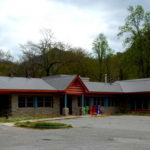
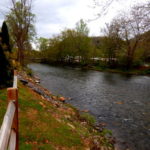
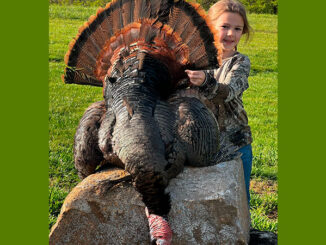
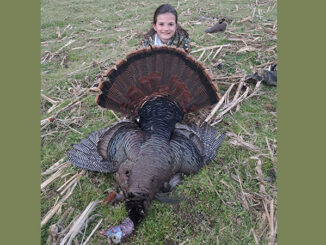


Be the first to comment